Asuntos Tradicionalistas
 |
 |
 |
 |
 |
 |
 |
Misa Dialogada - CLI
Teología del Encuentro y Primacía del Amor
Es bien sabido que ciertos progresistas habían estado apuntando a los seminarios años antes del Vaticano II, trabajando como termitas desde dentro para debilitar y socavar la estructura dominante del escolasticismo. El P. Peter Henrici, S.J., afirmó que este era el caso en los seminarios jesuitas donde los profesores simulaban obedecer los mandatos papales y los estudiantes fingían “hojear” los manuales, mientras que el método y los principios de Santo Tomás de Aquino eran abiertamente despreciados y considerados con desdén. 1
Al mismo tiempo, nos asegura el P. Henrici, ciertos textos modernistas se pasaban en secreto entre los estudiantes, por ejemplo, los libros de Henri de Lubac, Lo Sobrenatural y Corpus Mysticum. No hay razón para creer que las actividades de acosadores depredadores en busca de víctimas entre los seminaristas fueran exclusivas de los seminarios jesuitas: ya vimos en la Parte 139 cómo el joven Joseph Ratzinger fue influenciado y desviado por su mentor neomodernista durante sus años en el seminario. Nada de esto prueba que el escolasticismo estuviera en decadencia, como afirmó Francisco, sino que se estaban permitiendo intentos subversivos de derrocarlo por parte de obispos progresistas.
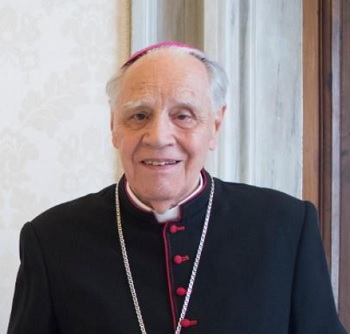 La caricatura que hizo Francisco del método escolástico empleado en los seminarios sirvió para reforzar la agenda progresista: desacreditar la “filosofía perenne” de la Iglesia para dar paso a la “Nueva Evangelización” posterior al Vaticano II. Esto queda claro en un discurso que pronunció en una reunión del Pontificio Consejo para la Promoción de la Nueva Evangelización en 2015, donde dijo:
La caricatura que hizo Francisco del método escolástico empleado en los seminarios sirvió para reforzar la agenda progresista: desacreditar la “filosofía perenne” de la Iglesia para dar paso a la “Nueva Evangelización” posterior al Vaticano II. Esto queda claro en un discurso que pronunció en una reunión del Pontificio Consejo para la Promoción de la Nueva Evangelización en 2015, donde dijo:
“La catequesis, como componente del proceso de evangelización, necesita ir más allá del simple ámbito del escolasticismo, para educar a los creyentes, comenzando con los niños, para encontrarse con Cristo, vivo y actuante en su Iglesia.” [Énfasis en el original]
Podemos dar por sentado que adoptar la nueva “teología del encuentro” significó dejar atrás la “filosofía perenne”, pues Francisco explicó que la nueva catequesis era necesaria para llevar a la Iglesia por lo que él llamó caminos “aún inexplorados” – presumiblemente donde su “Dios de las sorpresas”2 acecha en cada esquina.
Sin embargo, no hay nada genuinamente católico en la catequesis actual, pues Francisco nos ha llevado de regreso a las enseñanzas del P. George Tyrrell, quien sostenía que el escolasticismo era radicalmente deficiente como medio para presentar las verdades de la Revelación y era inútil para los tiempos modernos. De ello se deduce que el escolasticismo no tendría lugar en la “Nueva Evangelización”. Para Francisco y para Tyrrell, el conocimiento de Dios deriva de la experiencia vivida de los creyentes que lo encuentran directamente.
Según Francisco: “El objetivo definitivo de la catequesis es poner a las personas no sólo en contacto, sino también en comunión e intimidad, con Jesucristo.”3
No se menciona el papel indispensable de la Ecclesia Docens en el área de la catequesis. Por tanto, sus palabras deben interpretarse en el contexto del neo-modernismo que abrazó, donde no hay preceptos absolutos ni imperativos morales, y donde todo está abierto a discusión.
Ecclesia Docens reemplazada por un ‘discernimiento’ mal definido
Una de las piezas clave del nuevo enfoque de Francisco fue su fuerte énfasis en un fenómeno que denominó “discernimiento” y que predica en cada oportunidad. Sea lo que sea que quiso decir con este término, podemos estar seguros de que no tiene nada que ver con la práctica de la casuística que tradicionalmente se había usado en la Iglesia como método confiable y eficaz para resolver problemas de conciencia aplicando principios generales de moralidad a casos concretos.
El siguiente ejemplo de su forma de pensar sobre este tema ilustra la naturaleza claramente poco útil y confusa de sus consejos a los sacerdotes para tratar asuntos de conciencia:
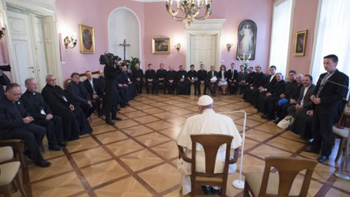 “Muchos preguntan: ‘¿se puede hacer esto o no se puede?’ Eso es todo. Y mucha gente sale del confesionario decepcionada. No porque el sacerdote sea malo, sino porque el sacerdote no tiene la capacidad de discernir las situaciones, de acompañarlas en un discernimiento auténtico. No tienen la formación necesaria…
“Muchos preguntan: ‘¿se puede hacer esto o no se puede?’ Eso es todo. Y mucha gente sale del confesionario decepcionada. No porque el sacerdote sea malo, sino porque el sacerdote no tiene la capacidad de discernir las situaciones, de acompañarlas en un discernimiento auténtico. No tienen la formación necesaria…
“Necesitamos formar a los futuros sacerdotes no en ideas generales y abstractas, que son claras y distintas, sino en este agudo discernimiento de espíritus para que puedan ayudar a las personas en su vida concreta. Debemos entender verdaderamente esto: en la vida no todo es blanco sobre negro o negro sobre blanco. ¡No! Los tonos de gris prevalecen en la vida. Debemos enseñarles a discernir en esta zona gris.” 4
Pero los criterios para un verdadero discernimiento conforme a las enseñanzas del gran moralista y Doctor de la Iglesia, San Alfonso María de Ligorio, ya estaban provistos en la “tradición manualista” que Francisco rechazó categóricamente. Además, Francisco no ha provisto ningún criterio objetivo, sino que ha dejado el proceso de discernimiento abierto a la manipulación y el abuso. En otras palabras, está permitiendo que la Iglesia sea gobernada por líneas subjetivas, creando así una situación global de relativismo moral, inseguridad y desconfianza mutua.
Finalmente, la prueba irrefutable de la deuda de Francisco con Tyrrell y los primeros modernistas puede encontrarse en una carta de Tyrrell donde describe su versión del catolicismo que llamó “el vino nuevo que eventualmente rompió las viejas botellas escolásticas.” Esta nueva religión se basa en la “primacía del amor” sobre la preocupación por la Verdad, que Tyrrell atribuía a Nuestro Señor:
“Él no fue explícitamente un teólogo ni un revelador de la ortodoxia intelectual, sino el difusor de un espíritu, o amor, que implicaba una teología más liberal, una concepción más amplia y digna de Dios y del hombre, y de sus relaciones mutuas.” 5
No se puede dejar de notar que esta descripción también captura en pocas palabras el compromiso del Vaticano II con una nueva religión que “liberó” a la Iglesia de la Tradición Católica, adulterando la Fe, subvirtiendo su Constitución Divina, prescindiendo de su disciplina y haciendo la Moral adaptable.
Tampoco se puede negar que esto provino de la mente febril de George Tyrrell, quien orgullosamente afirmó su completo acuerdo con su compañero modernista y excomulgado, Alfred Loisy: “Mentalmente, estoy con todo mi corazón y alma con el Abbé Loisy y su escuela.” 6
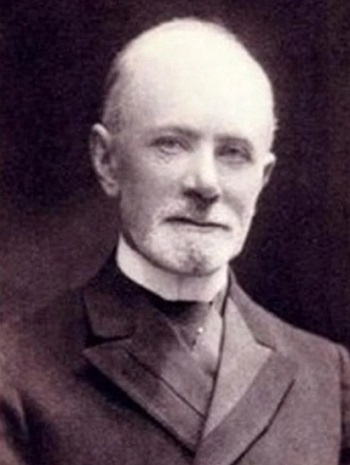 Pero el objetivo de Tyrrell, Loisy y todos los modernistas era instaurar una hermandad universal — idea de la Masonería — unida en torno a temas de ideales humanitarios, ambientalismo y “ecumenismo” que cancelarían y reemplazarían a la Iglesia Católica. Estas son las mismas desviaciones de la Verdad Católica que fueron acogidas en el Concilio presidido por Juan XXIII y Pablo VI y que se han desarrollado progresivamente hasta hoy bajo la tutela de sus sucesores en la Silla de Pedro.
Pero el objetivo de Tyrrell, Loisy y todos los modernistas era instaurar una hermandad universal — idea de la Masonería — unida en torno a temas de ideales humanitarios, ambientalismo y “ecumenismo” que cancelarían y reemplazarían a la Iglesia Católica. Estas son las mismas desviaciones de la Verdad Católica que fueron acogidas en el Concilio presidido por Juan XXIII y Pablo VI y que se han desarrollado progresivamente hasta hoy bajo la tutela de sus sucesores en la Silla de Pedro.
Al menos, Loisy acertó en una cosa cuando predijo: “Las herejías de hoy son parte de la ortodoxia del mañana”.7
No podría haber dicho una verdad más cierta, si entendemos la ortodoxia entre comillas. Sin embargo, no podemos dejar la última palabra a Loisy, Tyrrell, a los Papas del Vaticano II ni a Francisco.
El estado feliz de vivir al alcance de la Misa tradicional y los Sacramentos, con quizás acceso a una escuela católica no contaminada por enseñanzas inspiradas en el modernismo, no se produce espontáneamente ni por casualidad. La libertad para practicar la Fe Católica en un mundo hostil nunca es gratis. En la Historia, se consiguió a precio de sangre frente a la persecución de quienes estaban fuera de la Fe.
Hoy en día, esta libertad llega mayormente a través de un martirio silencioso infligido a los tradicionalistas por su propia Jerarquía. En cualquier caso, debe ser constantemente defendida para evitar que nos la arrebaten quienes desean tomarla, y luego debe ser guardada religiosamente para evitar futuros ataques. Paradójicamente, esta libertad fue la primera víctima del concepto no tradicional de la “Libertad Religiosa” inaugurado por el Vaticano II.
Ahora que las reformas del Vaticano II han fracasado colectivamente en preservar la Fe, el antídoto — que habría evitado la propagación de las herejías modernistas en primer lugar — es tan obvio como lógico: la fidelidad a la enseñanza y práctica de la Tradición.
Continuará

Al mismo tiempo, nos asegura el P. Henrici, ciertos textos modernistas se pasaban en secreto entre los estudiantes, por ejemplo, los libros de Henri de Lubac, Lo Sobrenatural y Corpus Mysticum. No hay razón para creer que las actividades de acosadores depredadores en busca de víctimas entre los seminaristas fueran exclusivas de los seminarios jesuitas: ya vimos en la Parte 139 cómo el joven Joseph Ratzinger fue influenciado y desviado por su mentor neomodernista durante sus años en el seminario. Nada de esto prueba que el escolasticismo estuviera en decadencia, como afirmó Francisco, sino que se estaban permitiendo intentos subversivos de derrocarlo por parte de obispos progresistas.

El P. Peter Henrici reveló las tácticas progresistas usadas para infiltrar los seminarios
“La catequesis, como componente del proceso de evangelización, necesita ir más allá del simple ámbito del escolasticismo, para educar a los creyentes, comenzando con los niños, para encontrarse con Cristo, vivo y actuante en su Iglesia.” [Énfasis en el original]
Podemos dar por sentado que adoptar la nueva “teología del encuentro” significó dejar atrás la “filosofía perenne”, pues Francisco explicó que la nueva catequesis era necesaria para llevar a la Iglesia por lo que él llamó caminos “aún inexplorados” – presumiblemente donde su “Dios de las sorpresas”2 acecha en cada esquina.
Sin embargo, no hay nada genuinamente católico en la catequesis actual, pues Francisco nos ha llevado de regreso a las enseñanzas del P. George Tyrrell, quien sostenía que el escolasticismo era radicalmente deficiente como medio para presentar las verdades de la Revelación y era inútil para los tiempos modernos. De ello se deduce que el escolasticismo no tendría lugar en la “Nueva Evangelización”. Para Francisco y para Tyrrell, el conocimiento de Dios deriva de la experiencia vivida de los creyentes que lo encuentran directamente.
Según Francisco: “El objetivo definitivo de la catequesis es poner a las personas no sólo en contacto, sino también en comunión e intimidad, con Jesucristo.”3
No se menciona el papel indispensable de la Ecclesia Docens en el área de la catequesis. Por tanto, sus palabras deben interpretarse en el contexto del neo-modernismo que abrazó, donde no hay preceptos absolutos ni imperativos morales, y donde todo está abierto a discusión.
Ecclesia Docens reemplazada por un ‘discernimiento’ mal definido
Una de las piezas clave del nuevo enfoque de Francisco fue su fuerte énfasis en un fenómeno que denominó “discernimiento” y que predica en cada oportunidad. Sea lo que sea que quiso decir con este término, podemos estar seguros de que no tiene nada que ver con la práctica de la casuística que tradicionalmente se había usado en la Iglesia como método confiable y eficaz para resolver problemas de conciencia aplicando principios generales de moralidad a casos concretos.
El siguiente ejemplo de su forma de pensar sobre este tema ilustra la naturaleza claramente poco útil y confusa de sus consejos a los sacerdotes para tratar asuntos de conciencia:

Francisco a los jesuitas de Cracovia en 2016: ‘La vida no es en blanco y negro; tenemos que discernir los grises’
“Necesitamos formar a los futuros sacerdotes no en ideas generales y abstractas, que son claras y distintas, sino en este agudo discernimiento de espíritus para que puedan ayudar a las personas en su vida concreta. Debemos entender verdaderamente esto: en la vida no todo es blanco sobre negro o negro sobre blanco. ¡No! Los tonos de gris prevalecen en la vida. Debemos enseñarles a discernir en esta zona gris.” 4
Pero los criterios para un verdadero discernimiento conforme a las enseñanzas del gran moralista y Doctor de la Iglesia, San Alfonso María de Ligorio, ya estaban provistos en la “tradición manualista” que Francisco rechazó categóricamente. Además, Francisco no ha provisto ningún criterio objetivo, sino que ha dejado el proceso de discernimiento abierto a la manipulación y el abuso. En otras palabras, está permitiendo que la Iglesia sea gobernada por líneas subjetivas, creando así una situación global de relativismo moral, inseguridad y desconfianza mutua.
Finalmente, la prueba irrefutable de la deuda de Francisco con Tyrrell y los primeros modernistas puede encontrarse en una carta de Tyrrell donde describe su versión del catolicismo que llamó “el vino nuevo que eventualmente rompió las viejas botellas escolásticas.” Esta nueva religión se basa en la “primacía del amor” sobre la preocupación por la Verdad, que Tyrrell atribuía a Nuestro Señor:
“Él no fue explícitamente un teólogo ni un revelador de la ortodoxia intelectual, sino el difusor de un espíritu, o amor, que implicaba una teología más liberal, una concepción más amplia y digna de Dios y del hombre, y de sus relaciones mutuas.” 5
No se puede dejar de notar que esta descripción también captura en pocas palabras el compromiso del Vaticano II con una nueva religión que “liberó” a la Iglesia de la Tradición Católica, adulterando la Fe, subvirtiendo su Constitución Divina, prescindiendo de su disciplina y haciendo la Moral adaptable.
Tampoco se puede negar que esto provino de la mente febril de George Tyrrell, quien orgullosamente afirmó su completo acuerdo con su compañero modernista y excomulgado, Alfred Loisy: “Mentalmente, estoy con todo mi corazón y alma con el Abbé Loisy y su escuela.” 6

Alfred Loisy, excomulgado, cuyos trabajos estaban en el Índice de Libros Prohibidos, inspiró a Tyrrell
Al menos, Loisy acertó en una cosa cuando predijo: “Las herejías de hoy son parte de la ortodoxia del mañana”.7
No podría haber dicho una verdad más cierta, si entendemos la ortodoxia entre comillas. Sin embargo, no podemos dejar la última palabra a Loisy, Tyrrell, a los Papas del Vaticano II ni a Francisco.
El estado feliz de vivir al alcance de la Misa tradicional y los Sacramentos, con quizás acceso a una escuela católica no contaminada por enseñanzas inspiradas en el modernismo, no se produce espontáneamente ni por casualidad. La libertad para practicar la Fe Católica en un mundo hostil nunca es gratis. En la Historia, se consiguió a precio de sangre frente a la persecución de quienes estaban fuera de la Fe.
Hoy en día, esta libertad llega mayormente a través de un martirio silencioso infligido a los tradicionalistas por su propia Jerarquía. En cualquier caso, debe ser constantemente defendida para evitar que nos la arrebaten quienes desean tomarla, y luego debe ser guardada religiosamente para evitar futuros ataques. Paradójicamente, esta libertad fue la primera víctima del concepto no tradicional de la “Libertad Religiosa” inaugurado por el Vaticano II.
Ahora que las reformas del Vaticano II han fracasado colectivamente en preservar la Fe, el antídoto — que habría evitado la propagación de las herejías modernistas en primer lugar — es tan obvio como lógico: la fidelidad a la enseñanza y práctica de la Tradición.
Continuará
- Peter Henrici SJ, "El desarrollo del Concilio hacia la madurez," Communio, vol. 17, invierno 1990, p. 85.
- Un ejemplo temprano, si no el primero, de la expresión “Dios de las sorpresas,” apareció en un libro con ese nombre del P. Gerard Hughes, SJ. Es un tema recurrente en los sermones del Papa Francisco. Véase, por ejemplo, Meditación matutina en la Capilla de la Domus Sanctae Marthae, ‘El Dios de las sorpresas’, 13 de octubre de 2014, L'Osservatore Romano, 17 de octubre de 2014, y Meditación matutina en la Capilla de la Domus Sanctae Marthae, "El Dios de las sorpresas," 8 de mayo de 2017, L'Osservatore Romano, 26 de mayo de 2017.
- Congregación para el Clero, Directorio General para la Catequesis 2020 § 80.
- Francisco, sesión de preguntas y respuestas con jesuitas polacos en una reunión privada durante la Jornada Mundial de la Juventud en Cracovia, 30 de julio de 2016, publicada en Roma el 26 de agosto de 2016 en la revista jesuita, La Civiltà Cattolica, por su editor, P. Antonio Spadaro, quien estuvo presente.
- G. Tyrrell, "Al Dr. Zdziechowski," 24 de junio de 1903 en Cartas de George Tyrrell, seleccionadas y editadas por M. D. Petre, Londres: T. Fisher Unwin Ltd., 1920, pp. 97-98.
- Ibid., p. 99.
- Alfred Loisy, Mémoires pour Servir à l'Histoire Religieuse de Notre Temps, París: Émile Nourry, 3 volúmenes, vol. 1, 1931, p. 135.
Publicado el 14 de julio de 2025

______________________
______________________
 Volume I |
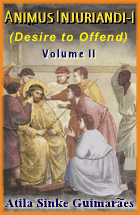 Volume II |
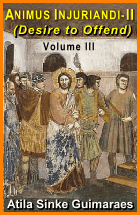 Volume III |
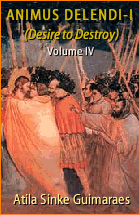 Volume IV |
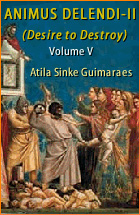 Volume V |
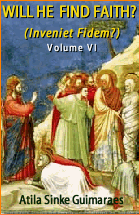 Volume VI |
 Volume VII |
 Volume VIII |
 Volume IX |
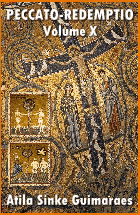 Volume X |
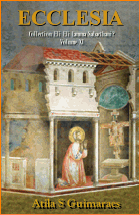 Volume XI |
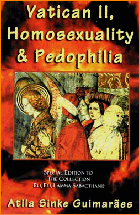 Special Edition |






